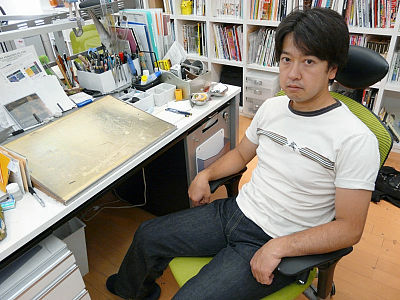Editors and manga artists reveal how the work that ranked first on e-book distribution sites was created

How was ``Rental Murder ~I'll lend you the revenge professional~' ', which ranked first in the youth rankings on
1st place in youth ranking in Comic Seymour! A behind-the-scenes look at the production of the hit movie 'Rental Murder ~I'll Rent You a Pro of Revenge~'! ~From project launch to manuscript production~
http://www.machiasobi.com/events/machiasobi_v27/m27_cmoa.html
At the event, Yuta Maeda , representative director of manga artist entertainment production Mangatari and editor of 'Rental Murder', manga artist Hinome Yaegashi , who is in charge of the original work and name of 'Rental Murder', and manga artist 'Rental Murder' Daigo Katoya , who is in charge of the animation for ``Murder,'' took the stage, and Hiroshi Matsuyama , the representative director of the game company Cyber Connect Two, served as the guest host.
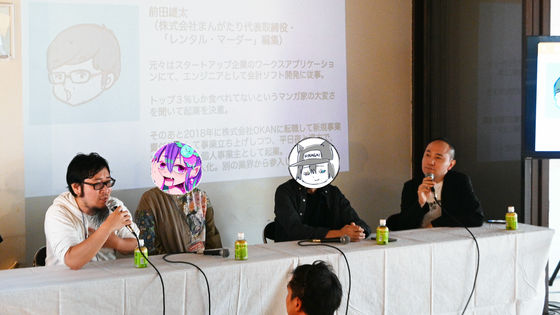
The outline of “Rental Murder” is as follows.
Mashiro has been bullied since entering high school. After suffering both physically and mentally, his sister, his only family, also disappears. When Mashiro learns that bullies are involved in his sister's disappearance, he finds a service called ``Rental Murder'' and requests revenge. Mashiro transfers all the money he had saved up from his part-time job to pay for his younger sister's tuition, but when he doesn't hear from her and thinks he's been scammed, he tries to commit suicide, but is rescued by a woman named Kiyoka. She calls herself a 'revenge agent'...?
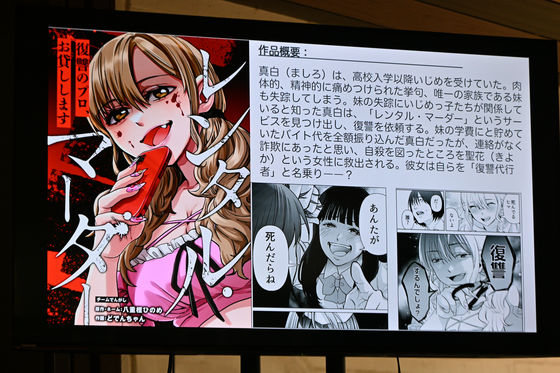
This work won first place in Comic Seymour's youth ranking, and was also nominated in the male category of ``Comic Seymour Everyone's Choice Electronic Comic Award 2024''.
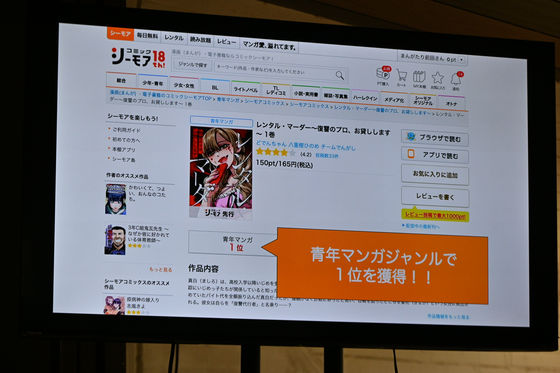
Below, I have summarized the four speakers' stories in a conversation format.
Moderator: Hiroshi Matsuyama (hereinafter referred to as Matsuyama):
When you think of manga, it used to be only manga magazines, but now there are a lot more e-books. Have the so-called traditional manga production styles and the production styles for e-books changed significantly?
“Rental Murder” editor Yuta Maeda (hereinafter referred to as Maeda):
Yes, I would like to briefly introduce the new production system and division of labor system. We use reader surveys to get information about what readers like about things, and in the case of Comic Seymour, we ask for detailed information similar to that. Based on that information, we create a name for the original work as a team, and then draw the story. The completed work will then be used and published in Comic Seymour.
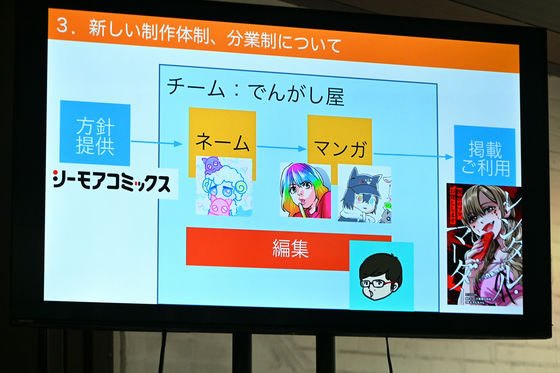
Maeda:
At Mangatari, I was creating a manga called Mecha Comic, which was a rival to Comic Seymour. When we issued that news release, we received a message via the inquiry form saying, ``We would like you to make a manga for us,'' which is what led us to create ``Rental Murder.''
Matsuyama:
From the inquiry form! Is that the kind of level you're talking about?
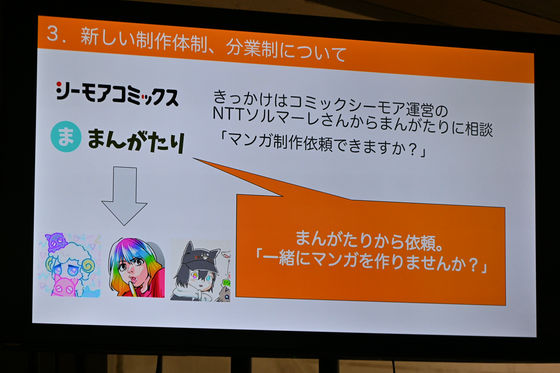
Maeda:
yes. Editing Production is not affiliated with any particular company and specializes in production, so we produce works upon request from a variety of companies.
Matsuyama:
In the case of ``Rental Murder,'' I think the order is that they first have a meeting with Comic Seymour and come up with a plan to create a revenge movie, and then they approach the manga artist.What do you think? mosquito.
Maeda:
Comic Seymour sent me a message saying, ``I want you to create a genre like this,'' and one of them was ``revenge.'' So, when we were thinking about who should make it, we either approached people who already had connections with our company and said, ``We've been asked to make this kind of work, what do you think?'' or we put out a call on Twitter.
Matsuyama:
Are you recruiting publicly?
Maeda:
There are many cases in which we are able to connect with manga artists who have applied and said, ``I want to do this'' through general recruitment.
Matsuyama:
For 'Rental Murder,' did you first talk to Mr. Yaegashi?
Maeda:
This work was contacted by Mr. Yaegashi.
'Rental Murder' original author, Hinome Yaegashi (hereinafter referred to as Yaegashi):
I had a relationship with Mr. Maeda as an acquaintance of an acquaintance. Originally, I had never created a work from the perspective of a ``manga original''.
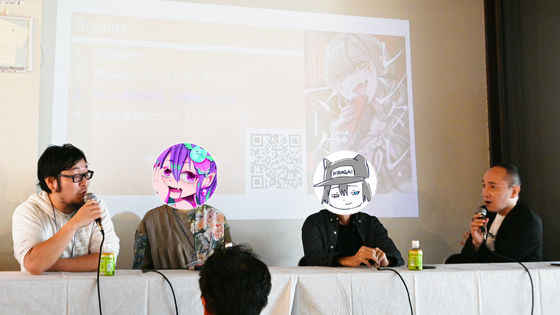
Matsuyama:
So you were working normally as a manga artist.
Yaegashi:
I created my own name and drew it myself.
Maeda:
Although I was acquainted with Mr. Yaegashi, this was my first time working with him.
Yaegashi:
When I looked at the official website, I saw that they were recruiting, so I contacted them using the application form.
Matsuyama:
So, in the recruitment guidelines, does it specifically say 'We are looking for people who can do this kind of work'?
Yaegashi:
I didn't write anything specific about it, but just said, ``It's a revenge story.'' I had never done it before, but I was interested in creating work for young people, so I applied.
Maeda:
If you look at Yaegashi-san's Twitter, you'll see that he's been doing a lot of other serials, but the genres are completely different.
Yaegashi:
Originally, I wasn't that particular about genre. However, when creating a work, major commercial publishers tend to go in the direction of ``I should just practice drawing.''
Matsuyama:
Did your genre narrow down as you progressed?
Yaegashi:
I'm not very good at drawing, and I've only been able to draw what I can, so I thought, ``I'll try something that I would never be able to draw.''
Matsuyama:
I see, with the original work and name, I think I can do it. From there, the story moves, and we decide what to do with the illustrations.
Maeda:
In the same way, I also call out to the illustrator, but in this work, I first called out to Doden-chan , and then I asked Mr. Katoya. Doden-chan said, ``I'd like to try a revenge story like this,'' so I thought it would be fun to work with Yaegashi-san on it. So, I told Comic Seymour, ``I'm thinking of doing this kind of work with this kind of team,'' and they gave me the OK in the judging process.
Matsuyama:
When a series starts in Comic Seymour, is there something like a name conference for the judges?
Maeda:
It's more of a plan. There is a submission format prepared, and you fill out all the important points such as what the plot is, what kind of characters it is, how it will be drawn, etc., and then submit it, and if it passes, they will start producing the manuscript.
Matsuyama:
Ah, if that goes through, we'll say, ``Then I'll leave it to you.''
Maeda:
This time, I brought as an example what Mr. Yaegashi actually filled out.

Matsuyama:
Do you remember the contents of this?
Yaegashi:
To be honest, I don't remember much.
Maeda:
The left side of the sheet is a spreadsheet where you fill in basic information, and the right side has a section where you can describe the plot and story in detail.
Matsuyama:
The examination is text-based.
Maeda:
It's text-based, and of course there's also character design. This is a rough draft, and we first ask people to come to us with ideas like ``this kind of design,'' and then we refine it by thinking ``Maybe it's better this way or that way.''
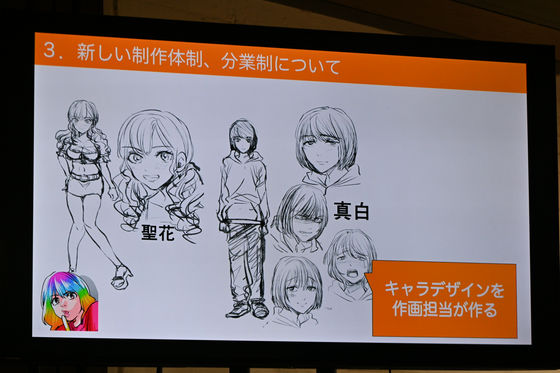
Matsuyama:
Then the work is finally created. What kind of details does Mr. Yaegashi go through?
Yaegashi:
It's better to have an idea of the image, so we even come up with a name, although that's not required.
Matsuyama:
It's an aggressive style.
Yaegashi:
It's not that I'm being aggressive (lol), but I feel like the plot alone isn't enough to convey the story, so I basically try to put everything in the name.
Matsuyama:
That's the part of being a manga artist. So, this is the actual name with Mr. Yaegashi drawn on it. Is it a digital production?
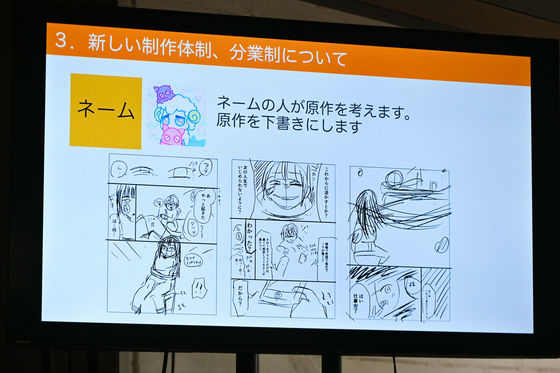
Yaegashi:
I give it to the editor with the dialogue data included, so it's all digital.
Maeda:
When I receive the digital data, I add editorial comments like 'Please do it this way' and then pass it on to the illustrator.
Matsuyama:
Then the illustrator does the work.
Maeda:
This is the episode where Mr. Katoya just started drawing.

Matsuyama:
I'll dig into this as well, but I hear that someone else was originally in charge, not Katoya-san, but was he replaced due to poor health?
Maeda:
yes. I can't go into too much detail, but the posture I took while drawing put pressure on my nerves, so the doctor told me to take a little rest. So, after consulting with Comic Seymour, we decided to ask Katoya.
Matsuyama:
Even if it can't be helped due to poor health, isn't it a pretty rare case for the series to be continued with a new person illustrating it? How did you decide to work with Katoya?
Maeda:
I've been friends with Katoya for a long time. When I was really on the verge of ending the series and thought, ``What's going to happen?!'', I could rely on Katoya because they had overwhelming experience, and their drawing skills had created other works, and above all, I felt confident. I can't think of anyone else other than Mr. Katoya to ask this difficult story. I asked her, ``I'm sorry, but I have other works, but if it's not too difficult, I would like your help.Is it possible?'' I asked her, and she replied, ``I thought it was quite an interesting work, so if it's okay with me.'' I received a positive response.
Matsuyama:
What was your impression when you heard the story?
“Rental Murder” illustrator Daigo Katoya (hereinafter referred to as Katoya):
I was surprised because it was my first time doing this, and I was wondering what I should do since the designs would change if I took over.
Matsuyama:
In that case, did you steal touches or something like practice?
Katoya:
I was careful that I had to make sure that the readers who read the sequel could read it without feeling uncomfortable.
Matsuyama:
...Can you do that?
Katoya:
It's difficult, isn't it? However, I think it would be good if I could continue to take over the work and eventually make it my own painting.
Matsuyama:
I believe Katoya also has assistants working on it, but what kind of production system does it have?
Katoya:
We have 3 to 4 people join us, but it doesn't mean they always join us.
Matsuyama:
I feel like they come to me when I need them.
Maeda:
Mr. Katoya read episodes 1 to 7 and said, ``It's interesting to draw Doden-chan like this,'' and ``It's interesting because I wouldn't draw him like this.'' So from episode 8 onwards, we've been releasing something that blends in with Katoya's touch, and I was excited to see what kind of feedback it would get once it was released, but so far there haven't been any voices pointing out the differences in the art. I'm very grateful that there are so many comments about the conclusion of Part 1 that people are looking forward to what comes next, or that they're looking forward to the big mystery of the whole thing.
Matsuyama:
Since we have two manga artists here, I would like to ask them a lot of questions in person, but I would like to hear about how it all started. Mr. Yaegashi, how long have you been active as a manga artist?
Yaegashi:
I started drawing manga when I became an adult.
Matsuyama:
eh! Childhood, student days...
Yaegashi:
No, I grew up without even owning a drawing book at all.
Matsuyama:
That's a bit surprising.
Yaegashi:
There was a film club at my university, and I always wanted to become a film director.
Matsuyama:
Oh, the photographer. That’s it!
Yaegashi:
I continued on until I was about 25 years old, but when I felt that it would be difficult to work in the film field, I thought that if I reassembled the storyboards for the movie, it would look like a manga.
Matsuyama:
It's true that the names of the storyboard and manga are almost similar.
Maeda:
I met him just after I started drawing.
Yaegashi:
So when I brought it to a boy's magazine, they said, ``This isn't a manga, after all.''
Matsuyama:
I hear editors say things like that.
Yaegashi:
However, I guess people thought it was interesting that I tried to bring in something like that, so I decided to draw several one-shots.
Matsuyama:
If you don't mind, I'd like to know which publisher brought it in...
Yaegashi:
This is Shueisha.
Matsuyama:
Shueisha!? Editorial department of a boy's magazine? You went there!
Yaegashi:
In the first place, many people who bring in manga are teenagers.
Matsuyama:
surely.
Yaegashi:
I was in my 20s when I first brought it in, and I didn't really like manga that much...
Matsuyama:
Well done! (lol)
Maeda:
That's right (lol)
Yaegashi:
When that happened, I went to Shueisha because Jump was the only manga magazine I had seen, but in the end, even after trying for a year or two, I hadn't been drawing that much, so the quality of the drawings couldn't catch up, so I couldn't get a one-shot. Even if it is published, it will not be serialized.
Matsuyama:
...This from there. Although it was originally intended for boys' magazines, it was quickly changed to be aimed at young people's magazines.
Maeda:
It was a good choice for a youth magazine, so it was the right choice.
Matsuyama:
I see, since I originally worked in video, I'm not good at creating a name through text.
Yaegashi:
I agree.
Maeda:
Certainly, the video may not be as good as the text.
Matsuyama:
It's was so. Next is Katoya. Actually, I know him.
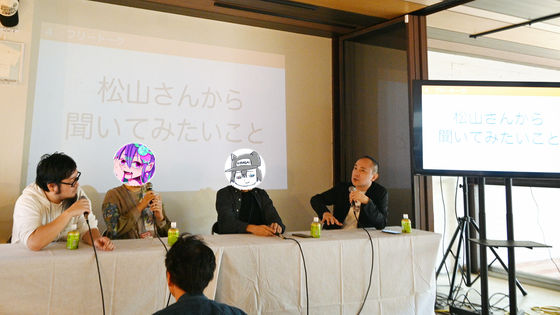
Katoya:
yes. I've been drawing since I was a child.
Matsuyama:
yes! This is what manga artists do. What manga influenced you the most when you were in elementary school?
Katoya:
I liked ``Black Angels'' and ``Hissatsu Shiokinin.''
Matsuyama:
Showa Shonen Jump! Shinji Hiramatsu's. Wasn't that scary? You stab a bad guy in the neck with a bicycle spoke to kill him? It was such a messy manga though.
Katoya:
The characters that appear and the characters that appear are all cool. My father really loved manga and would buy Jump, Sunday, Magazine, and Champion books when he came home.
Matsuyama:
It's a good family.
Katoya:
When my father came home, he said, 'Welcome home. Do you have any books?' (laughs)
Matsuyama:
What made you decide to try drawing it yourself?
Katoya:
I've been copying since I was in the lower grades. The serialization of ``Black Angels'' had already ended, so I started reading ``JoJo's Bizarre Adventure.''
Matsuyama:
I guess you liked dark works.
Katoya:
I think it was when I was in the 4th grade of elementary school that I properly drew the frames. With friends.
Matsuyama:
It looks like a boiled egg! Are you in charge of the original work and the illustrations?
Katoya:
That's what we both drew.
Matsuyama:
Two people drawing (lol) Which one is the main one?
Katoya:
That's how they both draw their own characters.
Matsuyama:
Is that a gag manga?
Katoya:
No, it's a manga that completely kills people. It's like a copy of 'Black Angels' (lol)
Matsuyama:
Most children in the world probably watched Dragon Ball, so why didn't they go there?
Katoya:
Instead of going there, I went to ``Hana no Keiji.'' However, I don't think that is reflected in the images.
Matsuyama:
When did you decide to become a professional?
Katoya:
When I was in high school, I applied for a Jump award. At that time, I had moved from Saitama to Miyagi, so I wanted to move to Tokyo. I was lucky enough to be selected as a finalist, so I thought, ``If I win the next award, I have no choice but to move to Tokyo,'' but the next opportunity never came. After graduating from high school, I attended a manga course at an animator's school while receiving a newspaper scholarship, and after taking my work to a publishing company, I became an assistant.
Matsuyama:
Where did you bring it?
Katoya:
It's a Sunday type. So I gained experience, worked part-time, and started bringing in work again. After that, when Hiroyuki Takei's ``Shaman King'' was being published in Weekly Shonen Jump, I was living in Hibarigaoka, the model for the stage, and at that time there was an advertisement in the magazine asking for an assistant.
Matsuyama:
It happened often in the past.
Katoya:
Seeing this as an opportunity, I applied, and since then I have been working closely with Mr. Takei, and I returned to Miyagi just before the coronavirus outbreak. I currently live in Kesennuma.
Matsuyama:
Kesennuma!
Maeda:
This is what I meant when I first tried to say, ``We're inviting guests from Tokyo,'' but I changed it to ``Tokyo, etc.''
Katoya:
At first, Mr. Takei was involved in analog production, but along the way digital production was introduced and he said he didn't have to be in Tokyo, so he decided to do it in Kesennuma.
Matsuyama:
In that case, Mr. Takei is the master.
Katoya:
I've been doing this for almost 20 years.
Matsuyama:
He is currently working as a manga artist in Kesennuma. Are your assistants also working online?
Katoya:
Yes, I'm at home.
Matsuyama:
Are meetings also online?
Maeda:
I've been doing this all over Zoom. There are some people who start the series without ever meeting them and don't meet them until it's finished. After the series ends, we often meet for the first time and say, ``Thank you for your hard work, let's go out for sushi.'' Meetings are held twice a month for one hour.
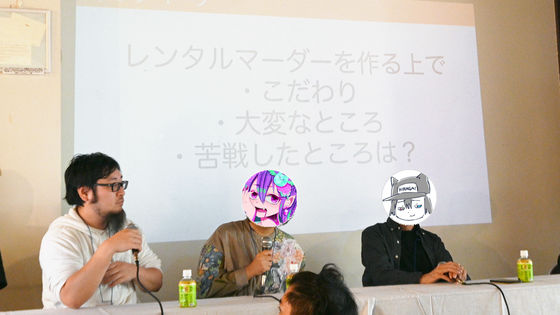
Maeda:
As you move through the slides, I would like to see the commitment, difficulties, and hardships that went into creating the work. What do you think of this, Mr. Yaegashi?
Yaegashi:
It was supposed to be a ``revenge story,'' but it was my idea to make it ``revenge agency.'' I was worried about whether or not I should make it a one-episode story. When I asked them about this, they said that the story ended without any plot, so I decided to insert small foreshadowing into the big mystery and connect it, but from the middle, I was told where and how much. There was a conflict over whether to release information, how popular the work was, and how long it was likely to last... That's the difficult part, but I realized that it wasn't as difficult as I thought.
Matsuyama:
That's amazing.
Yaegashi:
Since it was a genre I had never written in before, I thought I would have to take it slow, but I started to realize that if I worked hard, I could express what I wanted to say. So it's really fun right now. Looking back, episode 1 was the most difficult.
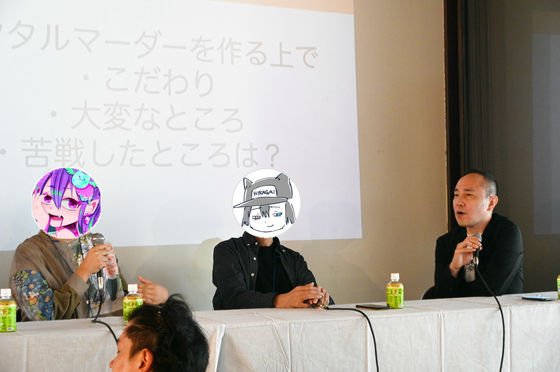
Maeda:
What do you think of Katoya?
Katoya:
Since I joined the project midway through, it's difficult to maintain the impression that readers have of the original work. Also, the women that Mr. Yaegashi writes are attractive, so I tried to capture as much of the emotion that Mr. Yaegashi wanted to convey as possible when turning the names into illustrations.
Matsuyama:
In that case, do you have to give very detailed instructions to the assistant?
Katoya:
I don't put out much. If I were 10 years younger, I might have tried to draw her in more detail, but now I'm like, ``I don't have to make a fuss about it.''
Matsuyama:
Is this a change on Katoya’s side (lol)?
Katoya:
Partly because of that, but also because it became possible to use 3D materials for the background, which made things less difficult. All you have to do is move the camera yourself, tell them what you want them to do, and ask for a little help, so perhaps advances in technology are helping.
Maeda:
Finally, we would like to inform you that the time left to use the venue is running out. This 'Rental Murder' has been entered into Comic Seymour's '
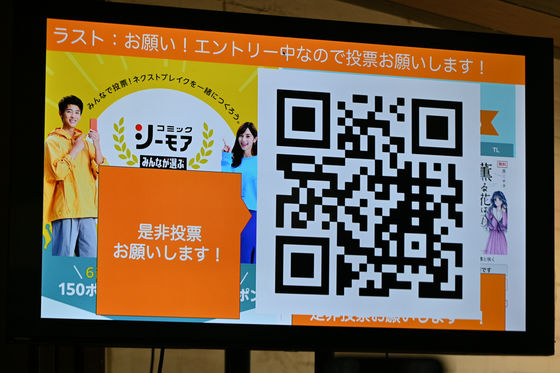
'Rental Murder - I'll lend you the revenge professional' is currently available up to Volume 8 (Episode 8).
Rental Murder ~I'll lend you the professional revenge~ Volume 8 (latest edition) | Daigo Katoya/Doden-chan/Hinome Yaegashi | Free manga (manga) at Comic Seymour
https://www.cmoa.jp/title/261008/vol/8/
Related Posts:





